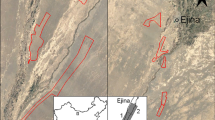Abstract
Only by providing the good conditions for the growth of plants can a favorable ecological environment on which human beings rely for existence be created. The upside-down-T double-layer water-conserving afforestation way is developed according to the situation of the shortage of water resources, low soil fertility and vast land in the arid areas. The characteristics of the afforestation way are to change the microenvironment in the root area of the plants, provide the favorable conditions for the growth of plants, and reduce the necessary conditions for the growth of plants in large areas in the arid regions. Meanwhile, the size of its water-conserving layer can be changed according to the size of the planted trees. The different ways of the bottom water-conserving layer can be used according to the requirements. The afforestation way is suitable for planting trees on a small scale and also for afforesting on a large scale under the adverse circumstances in the arid areas, and has been effectively used in the afforestation in the hinterland of Taklamakan Desert and the southern marginal zone of Gurbantonggut Desert. The prospects of the afforestation way are broad in afforestation and desertification control in the desert regions.
Similar content being viewed by others
References
Wang Zhouqiong, Li Shugang, Balance and control of soil nutrient in agro-ecosystem in the desert oases, Chinese Journal of Eco-Agricultural, 2001, 9(2): 75.
Wang Zhouqiong, Li Shugang, Strategic measures for sustainable agricultural development in desert regions, Chinese Journal of Soil Science, 2001, Vol. 32.
Li Shugang, Cheng Xinjun, Wang Zhouqiong, Agricultural Ecosystem in the Desert Oases (in Chinese), Beijing: Meteorological Press, 1998.
Wang Zhouqiong, Li Shugang, Hiroshi Kawakami et al., Practice and Mechanism of Making the Deserts Green with Peat Composed of Rotten Mosses (in Chinese), Beijing: Science Press, 2001.
Author information
Authors and Affiliations
Rights and permissions
About this article
Cite this article
Wang, Z. To afforest the desert with the technology of peat composed of rotten mosses and the sustainable development of the oases. Sci. China Ser. D-Earth Sci. 45 (Suppl 1), 87–90 (2002). https://doi.org/10.1007/BF02878393
Received:
Issue Date:
DOI: https://doi.org/10.1007/BF02878393




